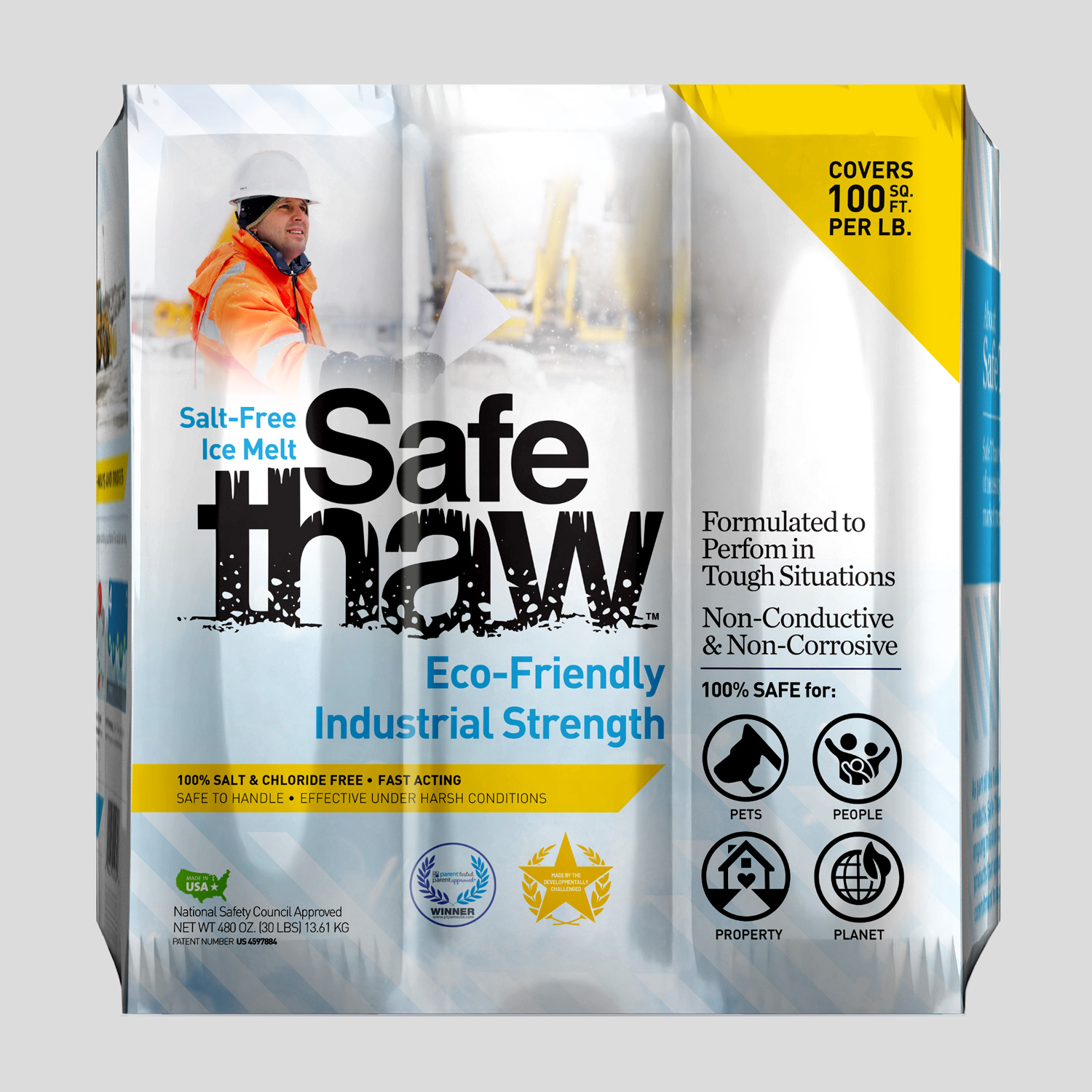Making Dry Ice At Home: Is It Possible?

Dry ice, the solid form of carbon dioxide (CO₂), is renowned for its cool smoke-like vapor and ultra-low temperatures. It has fascinated science enthusiasts and has been utilized in numerous applications, from food preservation to stage effects. Given its intrigue and utility, a common query emerges: How to make dry ice? Moreover, how cold is dry ice really? Let’s dive into the icy depths of these questions.

Safe Thaw
Safe Thaw was created as the ice management solution for tough winter environments. Ideal in commercial and industrial properties, shops, government agencies, bridges, and construction.
The Science Behind Dry Ice
Before venturing into how to make dry ice, it’s crucial to understand its nature. Unlike regular ice, which is the solid form of water, dry ice is the solid form of CO₂. It gets its name from its unique ability to sublimate — that is, transition directly from a solid to a gas without passing through a liquid phase. This sublimation is responsible for the fog-like effect many associate with dry ice.
Just How Cold Is Dry Ice?
Answering the secondary query, dry ice is extremely cold. Its temperature sits at a freezing -78.5°C (-109.3°F). This extreme cold is what makes dry ice so effective for rapid cooling and preserving items for longer periods. However, it also means one should handle dry ice with care to avoid frostbite or burns.
Can You Make Dry Ice At Home?
Technically, making dry ice is about capturing CO₂ in its solid form. Here’s a basic rundown:
- High-Pressure CO₂: Start with a CO₂ source in a high-pressure container, such as a fire extinguisher.
- Release and Capture: Release the CO₂ into a cloth bag. As the gas expands rapidly, it will cool and a portion will solidify, forming dry ice.
- Harvest: Once the release is complete, you can collect the dry ice particles from the bag.
While this method can produce dry ice, it’s essential to note that making dry ice at home is neither efficient nor economical. Commercial production uses specialized equipment to capture CO₂ in its solid form efficiently. Moreover, safety is paramount. Given the extreme cold of dry ice and the potential dangers of handling high-pressure CO₂, homemade methods come with risks.
Safe Handling And Storage
Whether you’ve acquired dry ice from a store or tried making it at home, safe handling is essential. Always use gloves or tongs to handle dry ice. Store it in an insulated container, but never in an airtight one. As dry ice sublimates, it releases CO₂ gas, which can build pressure and cause the container to burst.
Furthermore, if you’re using dry ice to cool your driveway or any other area, it’s imperative to remember that while it’s effective at cooling, it can also create slick surfaces. If these surfaces become icy, especially in colder climates, they can become safety hazards.
The Role Of Safe Thaw In Driveway Maintenance
While we’re on the topic of icy driveways, it’s worth noting the importance of maintaining safe walking and driving surfaces, especially in winter. Traditional ice melting methods can be corrosive and harmful to the environment.
Enter Safe Thaw, a chloride-free and toxin-free, industrial-use ice melt. Its non-corrosive properties ensure that it won’t damage your industrial property, or machinery, or pose the risk of short circuits. More than just being safe, Safe Thaw’s concentrated formula ensures maximum effectiveness season after season. Boasting a unique blend, the modified crystalline amide core infused with a special glycol admixture and traction agents ensures you’re neither compromising safety nor environmental health.
100% salt & chloride-free, fast acting Ice Management Solution
In Conclusion
We hope now you have a better idea about how to make dry ice. While the allure of making dry ice at home is tempting, the process is fraught with inefficiencies and potential dangers. It’s often more practical and safe to purchase commercially made dry ice. And remember, whether you’re dealing with the ultra-cold of dry ice or the icy challenges of winter driveways, having the right products, like Safe Thaw, can make all the difference in safety and effectiveness.
Try Also Our Other Winter Safety Products:
Safe Paw
The Original and #1 Selling Pet and Child Safe Ice Melt for over 20 years. Guaranteed environmentally safe –It won’t harm animals or children, and it won’t damage your property. That’s Safe Paw. Safe Paw can change how winter affects our planet.

Walk On Ice
The handy disposable canister can be taken everywhere, with the same 100% naturally occurring minerals that provide instant traction on ice or snow. Use it on sidewalks, steps, or as an instant traction agent for your car.



